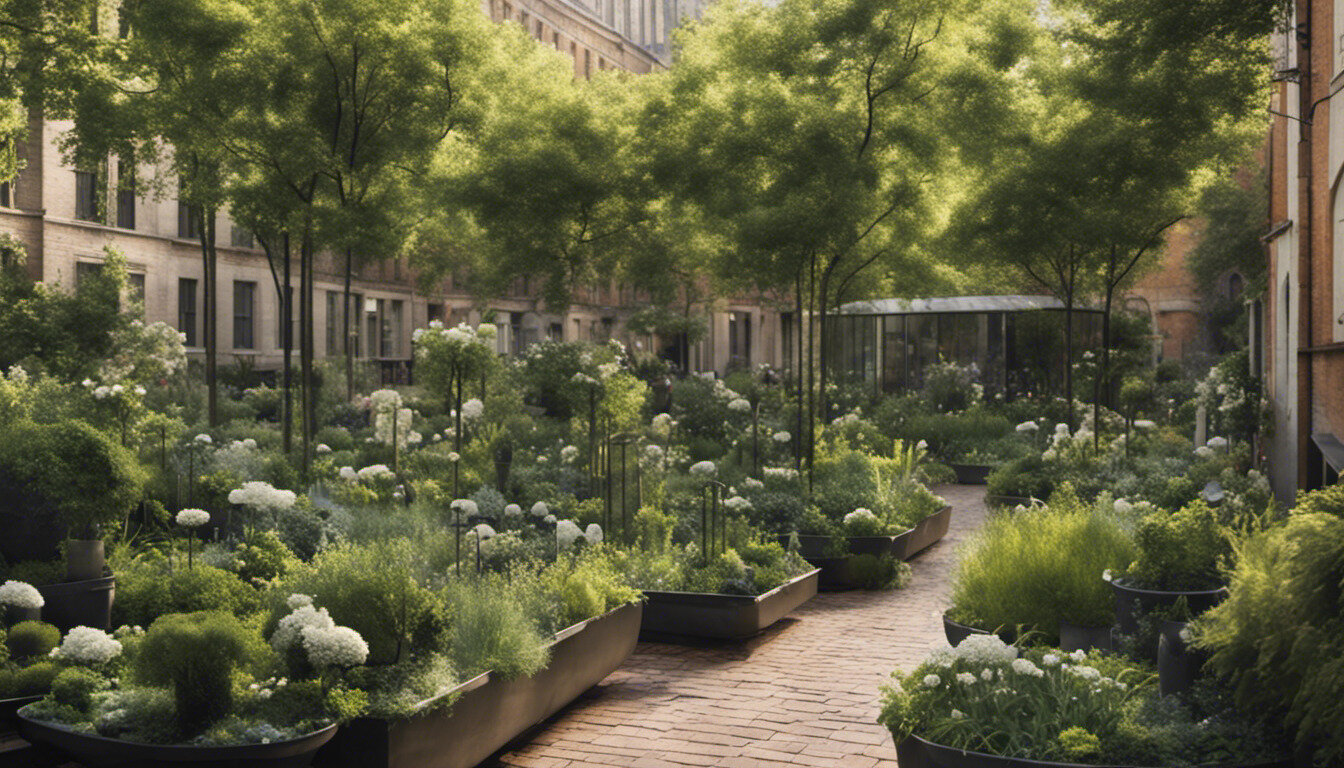Little Known Facts About City Blooming.
Table of ContentsThe City Blooming PDFsAbout City BloomingCity Blooming Fundamentals ExplainedThe Best Guide To City BloomingRumored Buzz on City Blooming
Intrigued in growing food to buy in the City of Chicago? Thinking of starting a neighborhood garden? Modifications to the Chicago Zoning Regulation enable agricultural usages like area gardens and city farms in lots of components of the city. Below is a checklist of regularly asked concerns pertaining to the regulations and guidelines that farmers must take into consideration when planning an urban farming job.
The zoning change does not customize any other codes managing composting, building authorizations, acquiring or leasing City owned home, business licenses or ecological contamination. There are existing codes that regulate these issues and they remain in full effect and might be appropriate to your project. Community yards are commonly owned or managed by public entities, public companies or community-based organizations and maintained by volunteers.
Urban farms grow food that is intended to be sold, either on a not-for-profit or for-profit basis. Due to their business objective, urban farms need a company permit.
Top Guidelines Of City Blooming
The amount of garden compost material can not go beyond 25 cubic backyards at any type of provided time according to the standards in 7-28-715 of the City's Municipal Code. Since the dirt at the majority of brand-new garden websites requires amending, garden compost, dirt, timber chips, or various other materials can be acquired to construct or improve the expanding room.

If a structure license is called for after that the hoophouse will be taken into consideration an accessory building. You can figure out even more about the building permit requirements by contacting the Department of Structures. The 25,000-square-foot size limit is intended to prevent a single area yard from dominating an offered block or interfering with the block's existing household or commercial personality.
The limitation does not use to gardens situated in Public Open Area (POS) districts. Can there be more than one neighborhood garden that is 25,000 square feet on a single block? Yes. The dimension restriction relates to specific gardens, not to private blocks. No. Secure fencing is not called for, nevertheless, yards that have large auto parking locations may be required to mount fence or other landscaping features.
Top Guidelines Of City Blooming
B1 & B2 districts require that all business use activities be performed inside. R areas limit industrial activity. The laws mirror the objective and intent of the Zoning Code. Is fencing required for urban farms? Yes. Fencings may be required, along with landscaping and testing, for particular vehicle parking areas and outside work or storage space areas depending on area and the certain task happening.
Urban ranches need structure licenses and zoning approvals prior to building and construction (container and raised bed gardening etc.). Other forms of city review may be needed depending on specific frameworks, activities, dimension, landscape design, licensing, public heath and stormwater administration issues.
The Division of Organization Affairs and Customer Defense can help establish the certain kind of business certificate that's required. Off street parking is needed for the majority of industrial tasks in Chicago. The required number of vehicle parking rooms is based on the number of workers working on website and not the square footage of the expanding room.
The Basic Principles Of City Blooming

Yes. A city ranch can offer compost material produced on site, nevertheless, the operation must follow the laws in 7-28-715 of the Chicago Municipal Code. Yes. Aquaponic systems are enabled inside on city ranches in lots of zoning areas. A zoning testimonial and structure authorization is called for in order to install structures or systems and a business license is needed as defined over.
Approximately 5 hives or nests of honey bees may be kept as an accessory use. Nevertheless, beekeepers need to sign up with the Illinois Division of Agriculture. For additional information about the proposed zoning modification you may call the Division of Real Estate and Economic Advancement, Bureau of Planning and Zoning at 312.744.8563.
, which takes area in country areas at the edge of residential areas.
Some Ideas on City Blooming You Need To Know
It can entail a motion of organic cultivators, "foodies" and "locavores", that seek to develop socials media started on a shared principles of nature and community holism. These networks can develop by means of formal institutional assistance, ending up being integrated into neighborhood town as a "transition town" activity for sustainable urban growth.
In either case, the much more direct accessibility to fresh vegetable, fruit, and meat products that may be realised via urban farming can boost food protection and food safety while decreasing food miles, leading to lower greenhouse gas discharges, consequently contributing to climate adjustment reduction. Several of the first evidence of metropolitan agriculture originates from Mesopotamia.